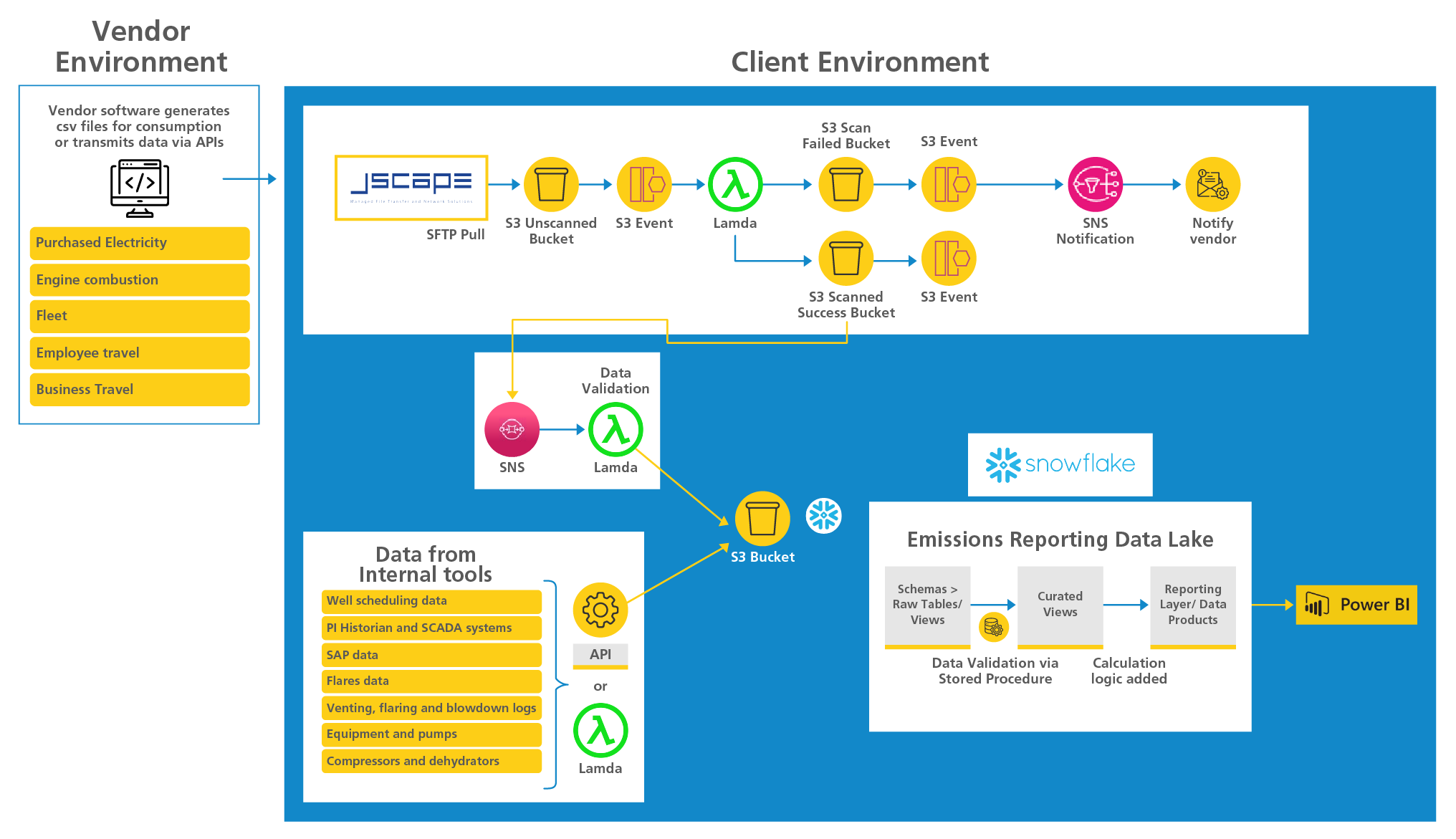The client
The client is a US-based onshore oil and gas business, known for their environmentally conscious production. They currently operate in the Permian, Eagle Ford and Haynesville basins with a focus on safely producing high-value oil and gas while reducing emissions.
The client, through its parent company, has a charter to reach net zero by 2050 which requires net zero across operations and net zero across production and sales. This aim relates to scope 1 (from running the assets within operational control boundary) and scope 2 (associated with producing the electricity, heating and cooling that is bought in to run operations) GHG emissions. They required a solution to automate their greenhouse gas (GHG) reporting for compliance, efficiency and cost savings.











